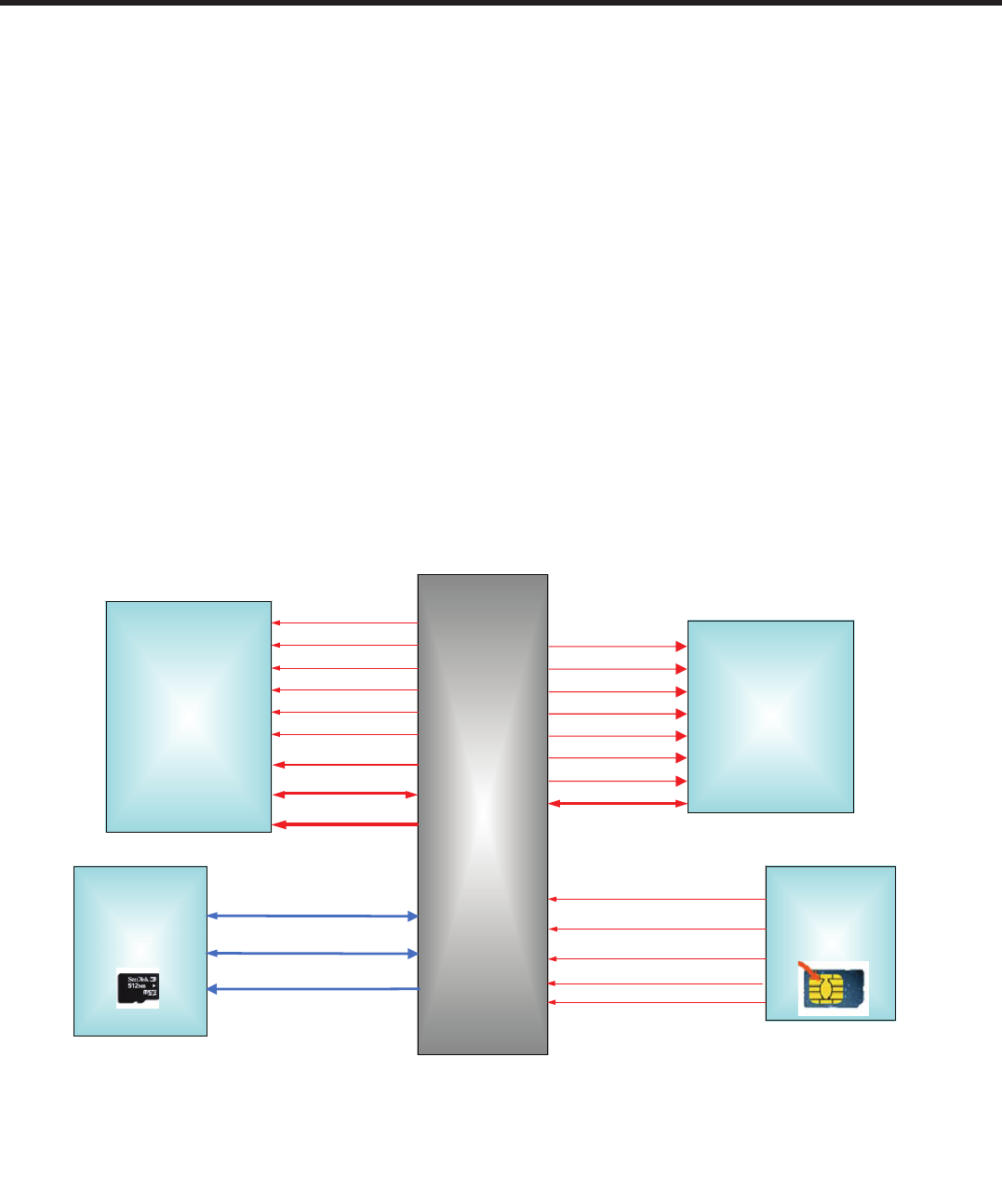
- 18 -
LGE Internal Use Only Copyright © 2010 LG Electronics. Inc. All right reserved.
Only for training and service purposes
3. TECHNICAL BRIEF
3.1.2 Memory support (and LCD interface)
The QSC62x0 device has two external bus interface (EBI) ports: EBI1 and EBI2.
EBI1 supports high-speed synchronous dynamic devices. Its memory controller supports the new mobile
DDR SDRAM memories with its higher bandwidth and ability to run at high clock frequencies. This
interface supports the high-bandwidth, high-density, and low-latency requirements of the QSC’s
advanced on-chip capabilities such as the ARM9 processor, highperformance graphics, and video
applications.
EBI2 is the slower speed interface intended to support memory devices such as NAND flash and
asynchronous SRAM, peripheral devices such as LCDs, and the UBM receiver for multicast or
broadcast reception (QSC6270 only). In addition, EBI2 is required to support a synchronous-burst
AAD NOR flash to enable a NOR/DDR SDRAM memory configuration because the simultaneous mode
(NOR, SDRAM) is not supported on the EBI1 bus.
The ARM926EJ-S microprocessor is a cached processor and all its accesses to external memory use burst
techniques of four or eight 32-bit words when the memory region is declared to be
cacheable/bufferable. To take advantage of this QSC higher performance feature, data from
memories must satisfy the requirements for these burst accesses.
Figure 3.1.2.1 The memory control blocks of C320
QSC6270
NAND Flash
(1Gbit)
SDRAM
512Mbit)
NAND_DATA[0: 15]
NAND__CS__N
NAND_LB_N
NAND_UB_N
NAND_OE_N
NAND_WE_N
NAND_BSY_N
NAND_WP_N
_CE
ALE
CLE
_RE
_WE
RY_BY
_WP
IO[1: 16]
DDR_A[0:13]
DDR_M_CLK_N
DDR_CKE[0]_
DDR_CS[0]_N_
DDR_RAS_N
DDR_CAS_N
DDR_WE_N_ _
DDR_DQM[0:1]_
DDR_D[0:15]
CLK
CKE
_CS
_RAS
_CAS
_WED
DQM
ADDR
DQ
EBI1
EBI2
(3G disable)
USIM
(SIM PLUS)
SIM_CLK
_ _
SIM_DATA
MUSIM_DM
MUSIM_DP
SIM_RST_N
External
Memory
( MICRO SD)
MSD_D[0:3]
MSD_CMD
MSD_CLK
3.1.2 Memory support (and LCD interface)
The QSC62x0 device has two external bus interface (EBI) ports: EBI1 and EBI2.
EBI1 supports high-speed synchronous dynamic devices. Its memory controller supports the new mobile DDR
SDRAM memories with its higher bandwidth and ability to run at high clock frequencies. This interface supports
the high-bandwidth, high-density, and low-latency requirements of the QSC’s advanced on-chip capabilities such
as the ARM9 processor, highperformance graphics, and video applications.
EBI2 is the slower speed interface intended to support memory devices such as NAND flash and asynchronous
SRAM, peripheral devices such as LCDs, and the UBM receiver for multicast or broadcast reception (QSC6270 only).
In addition, EBI2 is required to support a synchronous-burst AAD NOR flash to enable a NOR/DDR SDRAM memory
configuration because the simultaneous mode (NOR, SDRAM) is not supported on the EBI1 bus.
The ARM926EJ-S microprocessor is a cached processor and all its accesses to external memory use burst
techniques of four or eight 32-bit words when the memory region is declared to be cacheable/bufferable. To take
advantage of this QSC higher performance feature, data from memories must satisfy the requirements for these
burst accesses.


















